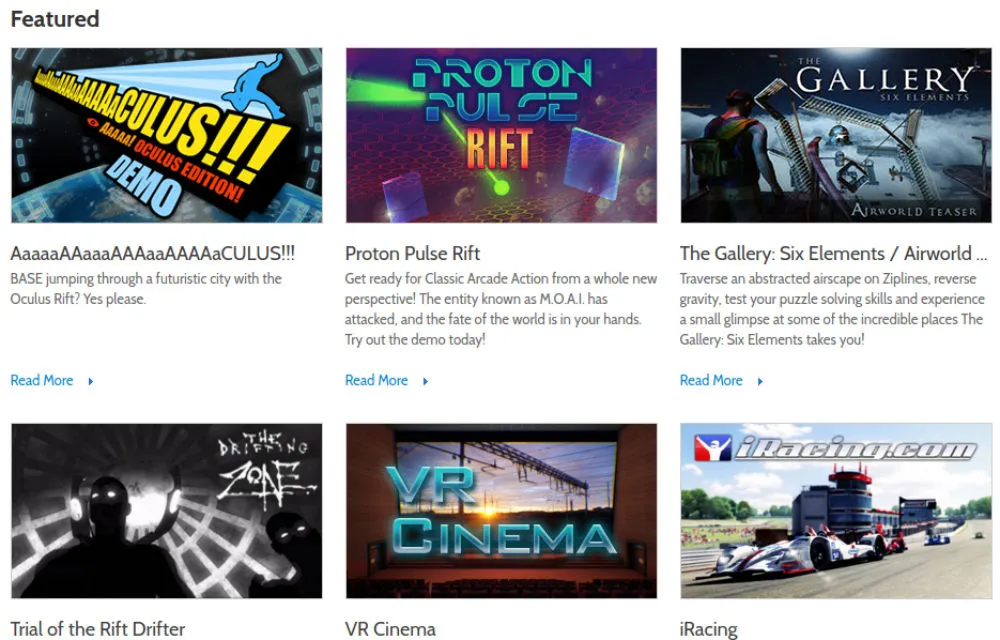Goodbye, Oculus Share.
August 2013 was a different time for VR. The low resolution Oculus DK1 was really the only thing on the market for enthusiastic developers, and the tracking was so limited you couldn’t even lean around in it. There wasn’t much software available for DK1 either, even for developers themselves to try.
That’s when Oculus launched Oculus Share as a place to post experimental projects for others to try. Over the next three years, the site would become the Internet’s leading repository for home-grown VR experiences. Educational experiences like Titans of Space and horror demos like Dreadhalls became widely downloaded among the earliest adopters.
I’m not sure how you could properly measure the effect Oculus Share had on popularizing VR, but it would be a mistake to overlook it entirely. That period between August and December 2013 Oculus raised $75 million to continue its VR ambitions. Shortly thereafter, it was acquired by Facebook. Oculus shipped the developer kits, but it was the software demos available from Oculus Share for DK1 that truly spread the idea globally — one set of eyeballs at a time — that VR could actually be educational, useful, entertaining and affordable in the very near future.
In a way, the site also served as a free exchange of ideas. It allowed the same developers who are releasing highly polished apps in 2016 to discover for themselves, through first-hand experience, the best and worst practices in VR. In other words, Oculus Share gave developers simulator sickness back in 2013 so that consumers wouldn’t get it in 2016.
Oculus Share was shut down this week as part of a plan to transition developers to a “Concepts” section of the Oculus storefront. There are alternative Web-based repositories available for VR demos, like Wearvr, but as Oculus Share disappears — now the site redirects to a Rift page — it’s worth remembering something that helped inspire some of the earliest VR developers.


























